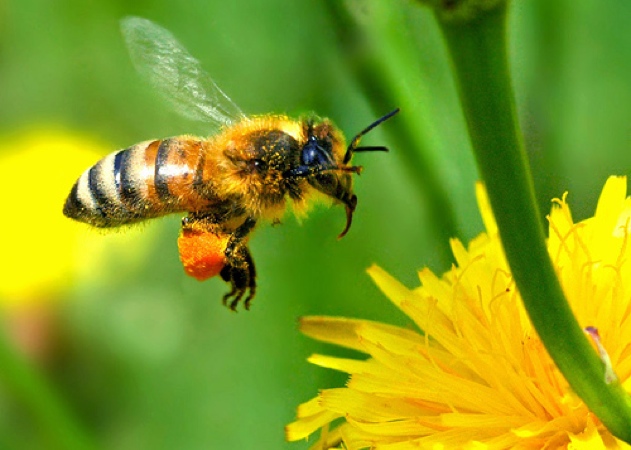
The buzz about the bees
Food in Canada
Research & Development Specialty Foods bee healthIn Canada, according to the Canadian Honey Council, bee population has declined by roughly 35 per cent in the past three years alone

At this time of year, when our gardens are at their most abundant and supermarkets are filled with an assortment of ripe produce, it’s easy to forget that an essential part of the production cycle of food and our natural ecosystem is slowly dying. And we are to blame.
Pollinators like bees, birds, bats and butterflies are responsible for pollinating 80 per cent of all flowering plant species, and together affect approximately 35 per cent of the world’s crop production, says the Food and Agriculture Organization of the United Nations. Yet their numbers are dropping. Bee health is of particular concern, not only because they are considered the most important pollinator, but because bee populations have decreased so dramatically. In Canada, according to the Canadian Honey Council, bee population has declined by roughly 35 per cent in the past three years alone.
In June, the Task Force on Systemic Pesticides released its four-year scientific analysis on systemic pesticides and their threat to biodiversity and ecosystem services worldwide. The Worldwide Integrated Assessment (WIA) is an analysis of the 800 peer-reviewed reports available, making it the most comprehensive scientific review yet. The organization, which is partnered with the University of Utrecht in the Netherlands and which includes 50 independent scientists from around the world, concluded that systemic pesticides neonicotinoids and fipronil (neonics) “are causing significant damage to a wide range of beneficial invertebrate species and are a key factor in the decline of bees.”
Neonics are pesticides that are sprayed over crops or coated on seeds such as corn and soybeans, and which, says the analysis, are now the world’s most widely used group of insecticides. But there is already concern with their use. Introduced in the early 1990s, they are designed to affect the nervous system of pests and cause chronic damage and death. Because these pesticides are systemic they are absorbed and transported to all parts of the plant. They are water soluble, and can build in the soil, increasing their toxicity.
Researchers have also identified other factors influencing bee health, including habitat loss, and parasites such as the Varroa destructor and the Nosema ceranae. Regardless, the Task Force is recommending that governments begin to restrict the use of neonics, with the goal of eventually phasing them out completely.
The European Commission has restricted the use of three neonics for two years — a limited but strong first step in the right direction. Now it’s time that Canada follows suit, before it’s too late.
Print this page